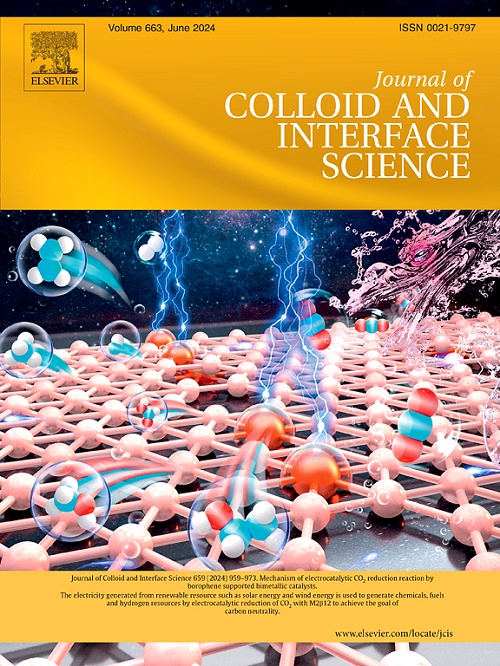研究了丙烯酸聚电解质接枝纤维素膜低压分离乙醇-水的简便方法
IF 9.4
1区 化学
Q1 CHEMISTRY, PHYSICAL
引用次数: 0
摘要
从低浓度水溶液中传统的乙醇分离是能源密集型的,并且会影响风味,因此需要高效、经济的替代方案。本研究采用表面引发原子转移自由基聚合(SI-ATRP)技术将聚丙烯酸盐(PAS)接枝到再生纤维素膜上制备了一种选择性多孔聚电解质膜。ph响应PAS层具有可调的选择性,在压力≤0.2 MPa下,对15 vol%乙醇溶液的乙醇截除率高达80%,与商业分离膜相比,具有更好的综合分离性能和发展潜力。此外,分子动力学模拟(MDS)揭示了聚电解质链行为与乙醇-水分子的相互作用,以及自由体积变化驱动分离。这种绿色、可扩展的制造策略为乙醇/水分离提供了一种潜在的、有前途的途径,这对于高效生物乙醇脱水和低含量酒精饮料加工等领域的应用是理想的。本文章由计算机程序翻译,如有差异,请以英文原文为准。

Facile approach developed for low-pressure separation of ethanol-water using cellulose membrane grafted with acrylic polyelectrolyte
Conventional ethanol separation from low-concentration aqueous solutions is energy-intensive and can affect flavor, highlighting the need for efficient, economical alternatives. This study presents a selective, porous polyelectrolyte membrane fabricated by grafting polyacrylate salt (PAS) onto regenerated cellulose membranes using surface-initiated atom transfer radical polymerization (SI-ATRP). The pH-responsive PAS layer enables tunable selectivity, achieving ethanol rejection rates up to 80 % for 15 vol% ethanol solutions at pressures ≤ 0.2 MPa which shows improved comprehensive separation performance and development potential compared to commercial separation membranes. In addition, molecular dynamics simulations (MDS) reveal the interactions of polyelectrolyte chain behavior and ethanol–water molecules, as well as free volume changes drive separation. This green, scalable fabrication strategy offers a potential and promising pathway for ethanol/water separation, which is desirable for applications in areas such as efficient bioethanol dehydration and processing of low-content alcoholic beverages.
求助全文
通过发布文献求助,成功后即可免费获取论文全文。
去求助
来源期刊
CiteScore
16.10
自引率
7.10%
发文量
2568
审稿时长
2 months
期刊介绍:
The Journal of Colloid and Interface Science publishes original research findings on the fundamental principles of colloid and interface science, as well as innovative applications in various fields. The criteria for publication include impact, quality, novelty, and originality.
Emphasis:
The journal emphasizes fundamental scientific innovation within the following categories:
A.Colloidal Materials and Nanomaterials
B.Soft Colloidal and Self-Assembly Systems
C.Adsorption, Catalysis, and Electrochemistry
D.Interfacial Processes, Capillarity, and Wetting
E.Biomaterials and Nanomedicine
F.Energy Conversion and Storage, and Environmental Technologies

 求助内容:
求助内容: 应助结果提醒方式:
应助结果提醒方式:


